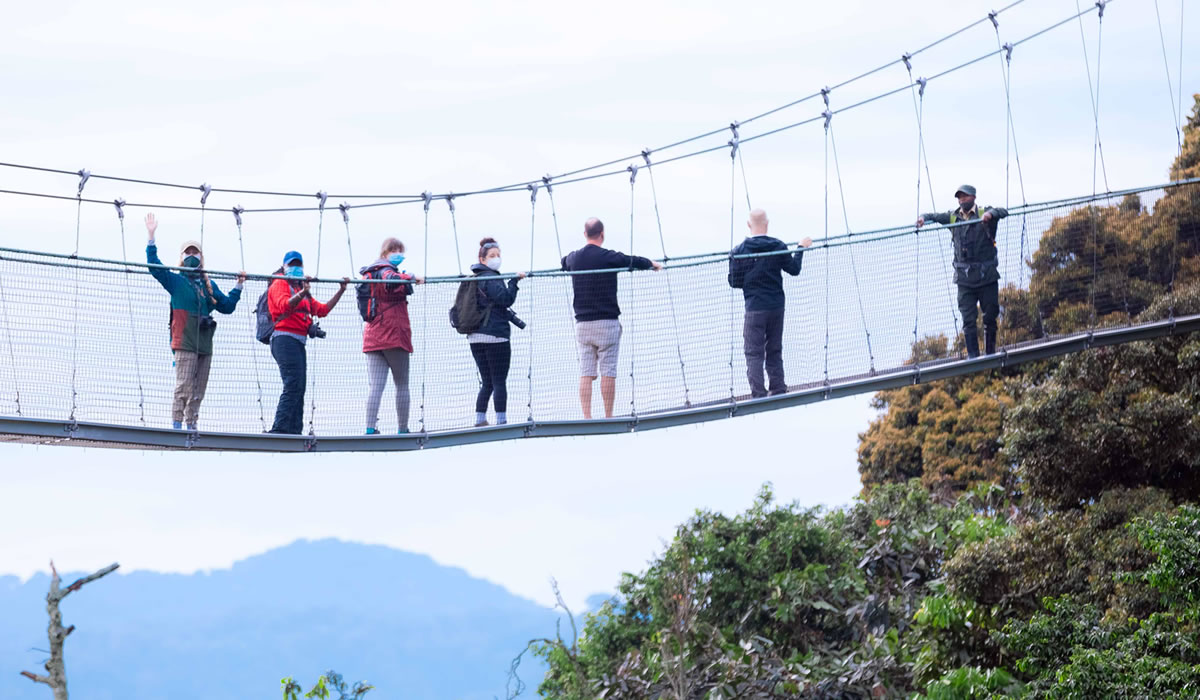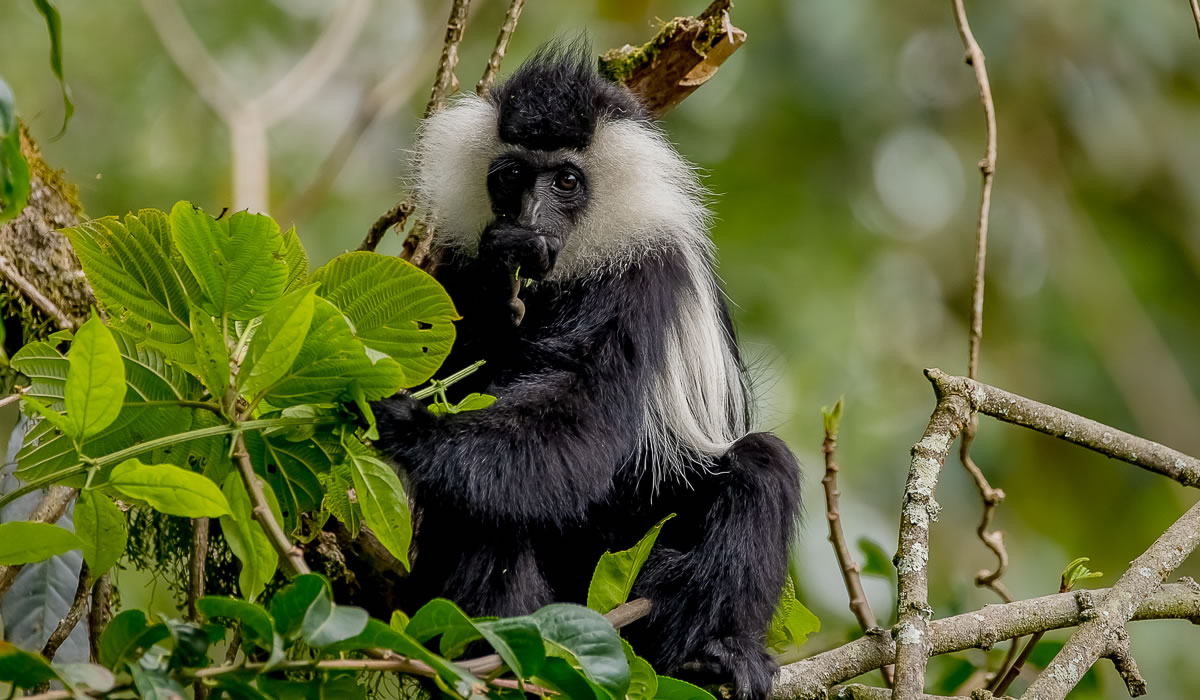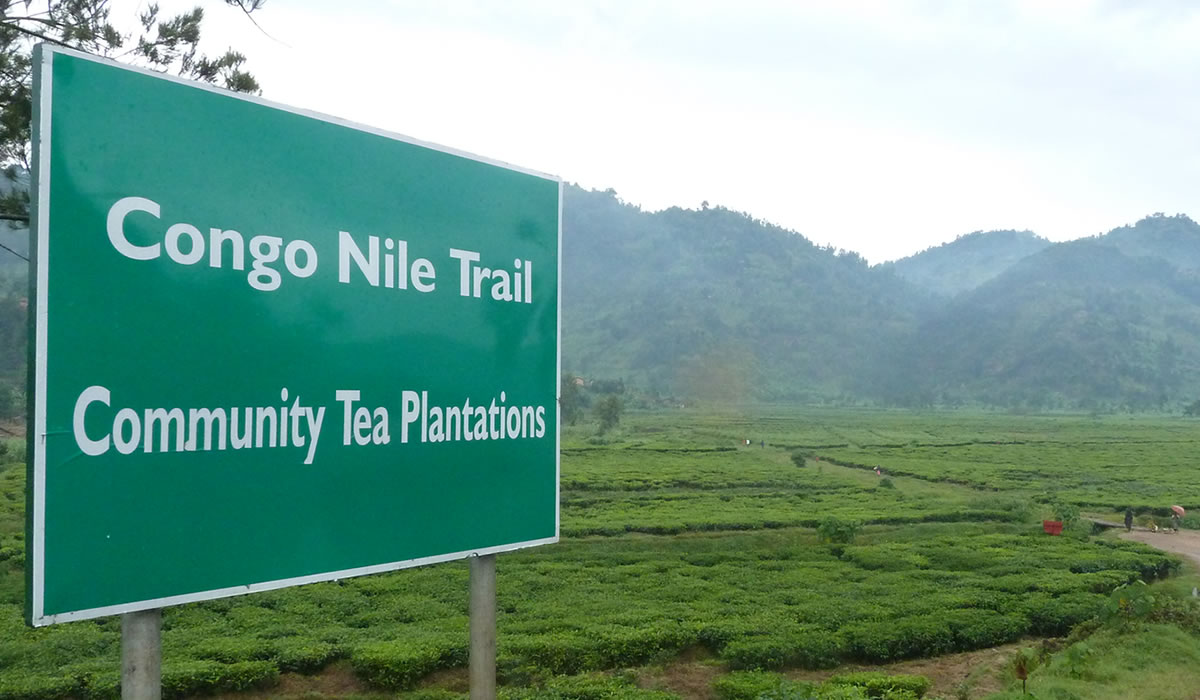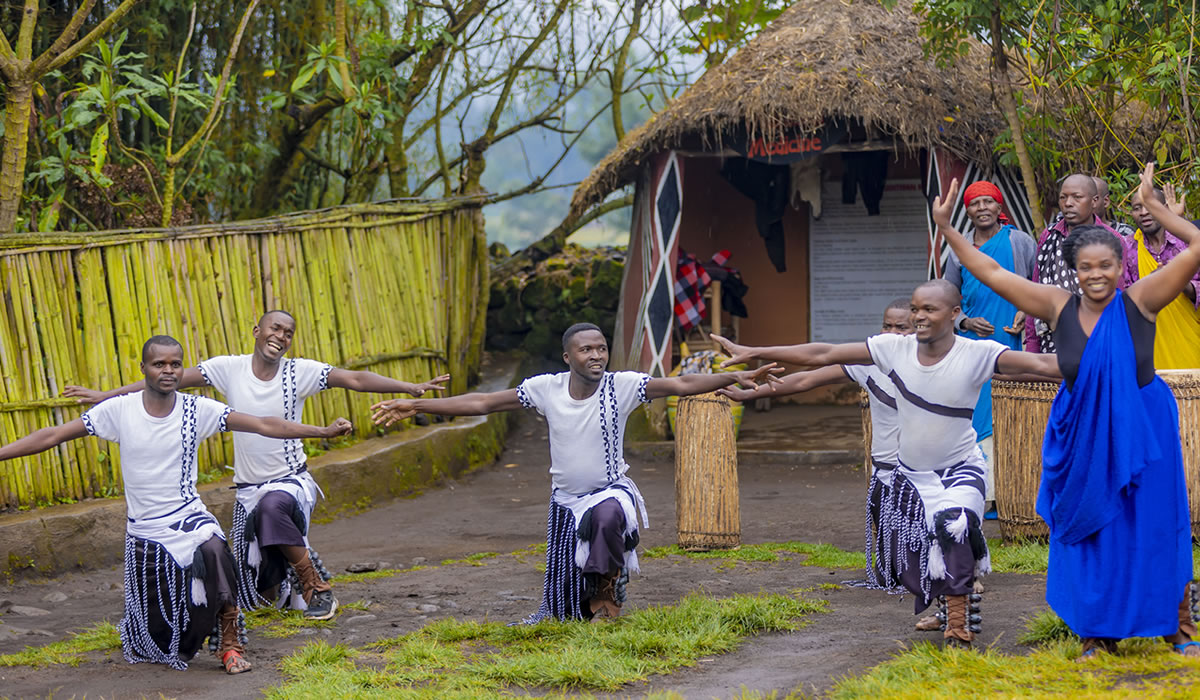Located in the southwestern part of Rwanda, Nyungwe Forest National Park stands as one of…

The Canopy Walk Experience in Nyungwe.
Hidden in the rolling hills of southwestern Rwanda lies one of Africa’s oldest and most biodiverse rainforests, Nyungwe Forest National Park. Spanning over 1,000 square kilometers, this pristine tropical forest is a treasure trove of flora and fauna, harboring a vast array of wildlife, including chimpanzees, colobus monkeys, orchids, butterflies, and over 300 bird species. Amidst its winding trails and dense vegetation lies one of Rwanda’s most thrilling and unique tourist attractions: the Canopy Walkway.
Suspended high above the forest floor, the Nyungwe Canopy Walk offers visitors a bird’s-eye view of the ancient treetops, a rare vantage point that combines adventure, natural beauty, and an immersive ecological experience. Built in 2010, it remains the only canopy walkway in East Africa and one of just a few on the African continent, making it a must-visit for both thrill-seekers and nature lovers. This article takes an in-depth look at the Canopy Walk Experience in Nyungwe, its setting, history, logistics, ecological significance, and what visitors can expect.
Setting the Scene: Nyungwe Forest National Park
Before delving into the canopy itself, it’s essential to understand the forest that houses it. Nyungwe Forest National Park, designated as a national park in 2005, is a UNESCO World Heritage tentative site and one of the best-preserved montane rainforests in Central Africa. It forms part of the Congo-Nile watershed and is a critical catchment area for Rwanda, providing freshwater to over 70% of the country.
The forest stretches across the Albertine Rift and is characterized by a dense canopy, swamps, bamboo groves, and open woodland. It is home to more than 1,000 plant species, 13 species of primates, including the endangered Eastern Chimpanzee and Ruwenzori Colobus, and hundreds of bird, butterfly, and amphibian species many of which are endemic to the region.
The Nyungwe Canopy Walkway, perched at an altitude of around 2,100 meters above sea level, offers an exhilarating yet accessible way to explore this biodiversity from a whole new perspective.
The Canopy Walkway: Structure and Design
The Canopy Walk is a 160-meter-long suspension bridge divided into three sections, with the longest span measuring about 90 meters. The walkway is suspended between giant trees at heights of up to 70 meters (approximately 230 feet) above the forest floor. Constructed from steel and secured by cables, it is designed to ensure both safety and minimal impact on the environment.
The canopy bridge sways gently with the movement of visitors, adding a sense of adventure to the experience. Yet, it is engineered to withstand high winds and heavy foot traffic, and it undergoes regular maintenance to ensure structural integrity and visitor safety.
Access to the walkway begins at the Uwinka Reception Center, located near the main entrance to the park. From here, visitors embark on a guided hike through the forest along the Igishigishigi Trail (named after the giant tree ferns that dominate this path), which is about 2.1 kilometers (1.3 miles) long. The hike takes approximately 1.5 to 2 hours round-trip, depending on pace and weather conditions, and includes moderately steep terrain.
The Experience: A Walk Among the Treetops
The moment visitors step onto the walkway, they are transported into another world. Above, the sun filters through the forest canopy; below, a sea of green stretches into the distance. Birds flutter at eye level, the calls of monkeys echo in the distance, and the cool mountain air brings with it the scent of moss, wet earth, and wildflowers.
The walkway is divided into three main segments:
- The First Bridge Segment – Begins at a lower elevation and introduces visitors to the experience gently. This portion allows for acclimatization to the swaying sensation and offers sweeping views of the canopy.
- The Central Span – This is the longest and highest portion of the walkway. It stretches across a deep forest valley and offers panoramic views of Nyungwe’s vast expanse. Standing at this point is both thrilling and humbling, offering unmatched photographic opportunities.
- The Final Segment – Leads to the other side of the forest and eventually reconnects to the return trail, offering a chance to take in the views one last time before re-entering the thick underbrush.
While the Canopy Walk is accessible to most visitors, it is not recommended for those with severe fear of heights or limited mobility, as it involves a fair amount of walking and physical exertion.
Flora and Fauna Encounters
One of the major appeals of the Canopy Walk Experience is the close encounter with Nyungwe’s wildlife. From this elevated vantage point, visitors often spot various species of monkeys swinging through the trees, including:
- Blue Monkeys
- L’Hoest’s Monkeys
- Red-tailed Monkeys
- Colobus Monkeys
While spotting chimpanzees from the canopy is rare, the sounds of their whoops and hoots often echo through the forest below.
Bird watchers are particularly rewarded, as the canopy level is ideal for spotting rare and endemic species such as:
- Rwenzori Turaco
- Great Blue Turaco
- Purple-breasted Sunbird
- Black-and-white-casqued Hornbill
In addition to wildlife, the canopy provides an intimate look at the epiphytic plants, mosses, lichens, and orchids that grow on the upper branches plants that are usually out of reach from forest-floor hikes.
Guided Interpretation and Educational Value
All Canopy Walk excursions are guided by trained park rangers or naturalists provided by the Rwanda Development Board (RDB). These guides are deeply knowledgeable about Nyungwe’s ecology and share fascinating insights on the forest’s biodiversity, conservation challenges, and cultural significance.
Visitors learn about the forest’s role in climate regulation, its importance to the Congo-Nile watershed, and the traditional uses of various plants by indigenous communities. The walk becomes not just an adventure, but an educational experience that raises awareness about the value of tropical forests in the global ecosystem.
Practical Information: Tickets, Timing, and Preparation
- Opening Hours: The Canopy Walk is open year-round, but best experienced during the dry seasons from June to September and December to February, when trails are less slippery.
- Tour Times: Canopy Walks typically depart in the morning (around 8:00 AM) and afternoon (1:00 PM), depending on bookings and weather.
- Booking: It is advisable to book in advance, especially during peak travel periods.
- Fees (as of 2024):
- International tourists: $60 per person
- East African Residents: $10–$20 per person
- Rwandan Nationals: discounted rates available
- What to Bring:
- Hiking shoes with good grip
- Lightweight rain jacket (weather is unpredictable)
- Insect repellent
- Water bottle and snacks
- Camera with secure straps
- Age Restrictions: Children under the age of 6 are not allowed on the Canopy Walk.
Accessibility and Nearby Attractions
Nyungwe Forest is located about 220 kilometers (137 miles) from Kigali, Rwanda’s capital, and can be reached by car in approximately 5 to 6 hours. The journey, though long, is scenic passing through verdant hills, tea plantations, and small villages that showcase Rwanda’s rural charm.
Accommodations range from budget guesthouses to luxury lodges. One&Only Nyungwe House, set within a working tea plantation, offers a high-end forest retreat, while Gisakura Guest House and Nyungwe Top View Hill Hotel provide more affordable options with excellent access to park activities.
Conservation and Sustainability
The Canopy Walk is not only an adventure but also a symbol of sustainable ecotourism. Revenue generated from the attraction contributes directly to park conservation, community development, and ranger salaries. Nyungwe’s management, under the Rwanda Development Board in partnership with African Parks (as of 2020), ensures that tourism is balanced with ecological preservation.
Local communities have been integrated into tourism planning, with many employed as guides, porters, and staff in hospitality services. Community-based tourism initiatives around the park further promote local culture and income generation, making conservation a shared responsibility.
The Canopy Walk Experience in Nyungwe Forest is one of Rwanda’s most iconic outdoor adventures. It’s not merely a walk on a bridge, it’s a thrilling flight through the treetops, a window into one of Africa’s most important ecosystems, and a celebration of Rwanda’s commitment to conservation and sustainable tourism.
Whether you’re a nature enthusiast, a photographer, a family looking for an unforgettable activity, or a solo traveler in search of perspective, the Canopy Walk offers something profound: the chance to witness the world from above, suspended between earth and sky, in the heart of a living forest that has stood the test of time.
Nyungwe’s canopy walkway is more than a travel highlight, it is a transformative encounter with nature that leaves every visitor with a deeper appreciation for the beauty and fragility of our planet.




